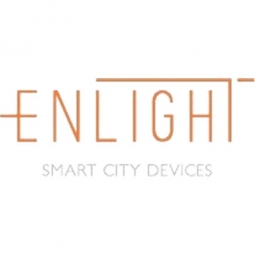Case Studies.
Add Case Study
Our Case Study database tracks 8,303 case studies in the global enterprise technology ecosystem.
Filters allow you to explore case studies quickly and efficiently.
Filters
-
(4)
- (3)
- (1)
- (1)
- View all
-
(3)
- (1)
- (1)
- (1)
- View all
-
(1)
- (1)
-
(1)
- (1)
-
(1)
- (1)
- View all 7 Technologies
- (2)
- (3)
- (2)
- (1)
- (1)
- (3)
- (1)
Selected Filters

|
Drone Connectivity and Parachute Deployment for Flying Eye
Around the world, drones of all shapes and sizes from the market-pioneering Flying Eye are filling the skies. They incorporate a wide range of sensors, cameras, batteries, and radio controls, making them an increasingly valuable proposition to a broad cross-section of industries. Today, Flying Eye drones are spraying crops, capturing breathtaking photos and videos of remote locations, and extending the reach and agility of customers around the world. But, according to Alexandre Thomas, co-founder and technical director of Flying Eye, significant safety issues emerge as these tiny aircraft crisscross overhead, since these vehicles are often flying quite near crowds of people. “A drone must be safe, and designers must have contingencies in place to respond to unplanned events and failures,” he said. “We take a lot of measures to ensure reliability in our aircraft. Our electronics are tested to ensure the drone won’t unexpectedly shut down. We design propellers from durable materials, and we invest in battery technology to keep the drones aloft for longer periods of time.” Of course, no vehicle is 100-percent foolproof. Technical errors and operator errors can disrupt flights, which is why Flying Eye builds in contingency parachutes and redundant communications into its aircraft. And that’s where Digi XBee® RF modules play a key role.
|
|

|
IoT Powering A New Way to Light Streets with Bifacial Solar Panels
When James Meringer’s commercial contracting business experienced a rapid increase in solar projects, he also saw an opportunity to extend the benefits of solar by using the bifacial solar panels he’d become familiar with in new ways. Bifacial solar panels enable sunlight from both sides of the panel, making it a more efficient harvest of solar power. Seeing the panel’s power, James and his team set out to use the same technology for street lighting. Until now, solar street lights have served as utilitarian solutions that force designers to choose between form and function. The Mira Bella Energy team has changed that.
|
|

|
Smarter, Safer, and More Cost-Efficient Lighting Environments with Enlight
Few areas draw as much attention, time, and budget scrutiny as the network of thousands of street lights deployed in every urban environment. From safety concerns arising from broken bulbs to escalating energy costs and maintenance headaches, street lights are a hot-button issue for government administrators, law enforcement personnel, and, of course, constituents. Furthermore, Cities are increasingly handing-over street lighting operations to external partners under a determined Service Level Agreement, which performance is appraised using Key Performance Indicators that have to be measured and recorded. Aiming to turn this challenge into opportunity, Enlight – a name that underscores the company’s commitment to energy and lighting solutions – has devoted its business to developing and producing smart networks of street lights in urban environments – from streets and avenues to parks, playgrounds, and plazas. According to Miguel Lira, general manager for Enlight, new technologies continue to evolve and municipalities want to do more than turn lights on and off. They want full smart solutions for monitoring and controlling energy, and managing maintenance. “At first, we just provided basic services to manage street lights – just turning them on and off,” he said, “but as new technologies emerged, we were soon integrating hardware, software and finally producing smart lighting devices. But as the sophistication of these devices grew, so did our need for bandwidth to transmit more secure data at faster speeds and with greater reliability.” Previously, Enlight installations tapped into the actual electrical cable power the street lights as the communication channel. “At the time, RF communication was not reliable, stable, or well-developed,” Lira said, “but the powerline was noisy and not fully reliable.”
|
|

|
New Sun Road Connects Uganda to Clean and Reliable Energy
New Sun Road is a registered California Benefit Corporation committed to implementing solutions to climate change and global energy poverty. This group of talented engineers is partnering with Ugandan green energy startup GRS Commodities to deliver reliable and clean power to the Ssese Islands in Lake Victoria, Uganda. The goal of the pilot system is to provide affordable and reliable solar powered electricity to businesses on Kitobo Island.Although no small feat, deploying the solar power grids is likely the simplest part of the solution. Solar was the obvious choice for the power source because it is economical and relatively simple to deploy.The primary difficulty lies in managing the energy grid and ensuring proper maintenance without having to be on-site at every location. The capability to remotely monitor the grid will enable New Sun Road to expand their service across the Ssese Islands in a more efficient manner since each grid can be monitored from one central location. But, in remote areas, where communication options are limited, how do you remotely monitor and manage a smart solar power grid?Without a local ISP, this can be a complex challenge, so the team decided to enable remote connectivity over the global cellular network.In addition to communication challenges, another major difficulty New Sun Road had to overcome was finding a device capable of withstanding the high temperatures within their network hubs. The device would be residing within a NEMA enclosure in direct sunlight, so the capability to function under extremely high temperatures was a must.
|
|

